- Home
- About
- Latest
- Living
- Travelling
- Sightseeing
- Destinations
- Events
- Forum
- Links
- Contact
Currently viewing the category:
"Sightseeing"
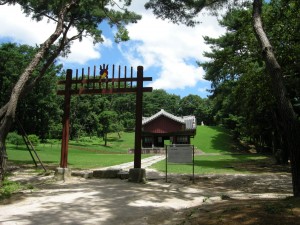
Sunchangwaon tomb located at Seooreung Tombs is a Won type tomb. Won means it was built to hold the Crown Prince / Princess or the King’s parents. Sunchangwon holds the bodies of Crown Prince Sunhoe (1551 – 1563) and his wife Crown Princess Gonghoebin (? – 1592) from the Yun Family. Crown Prince Sunhoe was the [...]
Continue Reading →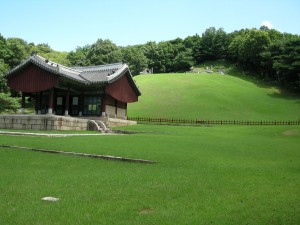
Hongneung tomb is located at the Seeoreung tomb site. Hongneung tomb is made up of the tomb of Queen Jeongseong. Queen Jeongseong was born in 1692 and passed away in 1757. She was the wife of the 21st monarch of the Joseon dynasty, King Yeongjo. Queen Jeongseong was married at age 10 to King Yeongjo [...]
Continue Reading →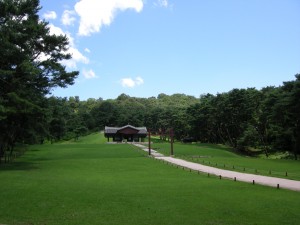
Ingneung tomb is located at the Seeoreung tomb site. Ingneung tomb is the tomb of Queen Ingyeong. She was the first wife of King Sukjong, the 19th monarch of the Joseon dynasty. She became the crown princess in 1671 at the age of 11 after marrying prince Sukjong. She then became Queen Ingyeong when her [...]
Continue Reading →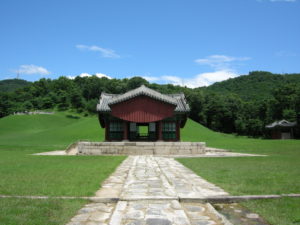
Myeongneung tomb is located at the Seeoreung tomb site. Myeongneung tomb is made up of three tombs. The tomb of King Sukjong, Queen Inhyeon and Queen Inwon. King Sukjong was born in 1674 and died in 1729. He was the 19th monarch of the Joseon Dynasty. He ruled for 46 years and accomplished many things [...]
Continue Reading →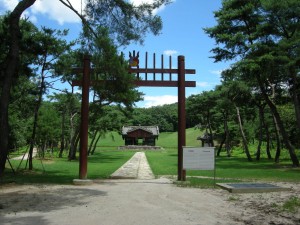
Changneung tomb is located at the Seeoreung tomb site. Changneung tomb is made up of two tombs, the tomb of King Yejong and his second wife Queen Ansun. King Yejong was the 8th monarch King of the Joseon Dynasty. He was born in 1450 and passed away in 1469. He was the second son of [...]
Continue Reading →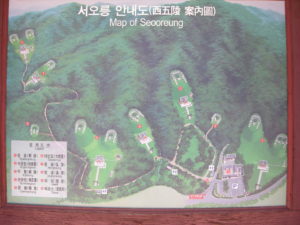
The Seooreung (서오릉) Royal tombs in Korea consits of 5 Royal graves, Gyeongneung, Changneung, Myeongneung, Ingneung, Honneung and 3 lower level tombs, 1 Myo tomb and 2 Won tombs. Neung or Reung refers to the tomb of a queen or king while, Won refers to the tomb of a [...]
Continue Reading →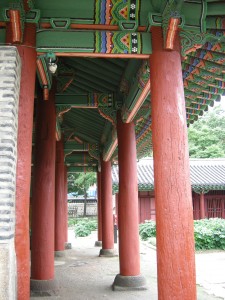
Dongmyo Shrine (also known as Seoul Donggwanwangmyo) in Seoul was built in 1601. Construction began in 1599 and took two years to complete. On January 21st, 1963 Dongmyo Shrine was designated as Treasure No. 142. The shrine was built to honour Chinese Commander Guan Yu (162 – 219). The spirit of Guan Yu is said [...]
Continue Reading →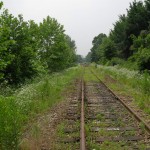
Hwarangdae Railroad Station was closed in December 2010. Hwarangdae Station was a temporary railroad station built during the Japanese Colonial Rule in 1939. The original appearance has been well preserved however since it’s closure on December 21st, 2010 the building has been left abandoned. The paint is peeling, walls are starting to crack and the [...]
Continue Reading →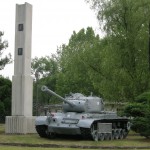
The Korean Military Academy is a great spot to visit and definitely off the the beaten tourist track. The Korean Military Academy is a prestigious academy famous for their strict regime, patriotism and high ranking graduates. The academy follows the motto: wisdom, integrity and courage. Until 1997 the Korean Military Academy was off limits to [...]
Continue Reading →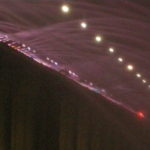
Banpo Bridge Water Fountain is located in Seoul along the Hangang River which is located beside the Hangang Park. In 2007 the Hangang Renaissance Project was launched to create, develop and revive the river area as a recreational area for locals and tourists to hang out. Part of this project [...]
Continue Reading →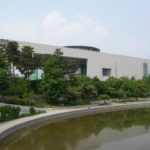
The National Museum of Korea was founded on December 3rd, 1945 after the liberation from the Japanese Occupation Government. The museum was relocated numerous times over the years due to war and the increase of relics. In the mid-nineties the government decided to build a permanent and dedicated building and [...]
Continue Reading →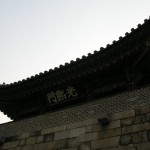
Gwanghuimun gate was one of the small four gates that made up the Fortress wall that surrounded the palaces, city and protected Seoul from invaders. It is one of the less known gates and doesn’t get much attention due to the much bigger Dongdaemun Gate situated nearby. Gwanghuimun was built in [...]
Continue Reading →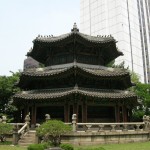
Hwangudan Altar and Gate were built in October 1897. The altar was a religious facility were the emperor of the Great Han Empire made offerings to the Lord of heaven when he established the empire in 1897. Most of the area was destroyed by the Japanese in 1913 to make way for a hotel but [...]
Continue Reading →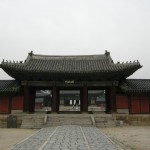
Changgyeong Palace was the third palace compound built during the Joseon Dynasty after Gyeongbok Palace and Changdeok Palace. Many Kings preferred to stay at Changdeok Palace and the number of royal family members increased, filling the palace to its capacity. Therefore, King Seongjong had Changgyeong Palace [...]
Continue Reading →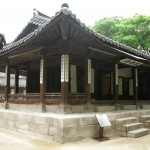
Unhyeongung Palace also known as Unhyeongung Royal Residence is the palace that King Gojong lived in before he acceded to the throne. The palace was built in 1864 and in 1869 more buildings were added. Although being the house of a high ranking official, Unhyeongung is similar to an inner palace. However, unlike the other [...]
Continue Reading →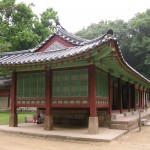
Jongmyo Shrine served as the venue for the royal ancestral rites during the Joseon period. Unesco inscribed Jongmyo on its World Heritage List in 1995. The construction of Jongmyo Shrine was completed in 1395 before that of the main palace, Gyeongbokgung Palace. Jongmyo Shrine is the supreme shrine of the [...]
Continue Reading →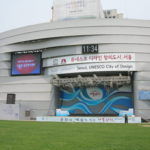
City Hall in Seoul is a governmental building for the Seoul Metropolitan Government. It is located next to City Hall Station. The building was built by the Japanese occupation government in 1926. After liberation from Japan, it served the Seoul city government. In front of City Hall building is the City Hall Plaza. It is [...]
Continue Reading →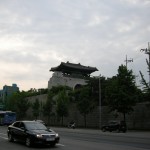
One of the four small gates in the historic fortress walls of Seoul. Hyehwamun was built in 1396 in the northeastern part of the walled capital. Its original name was Honghwamun but this had to be changed to the current name in 1511 because the same name was used for the east entrance [...]
Continue Reading →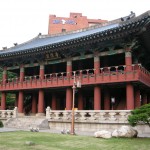
Bosingak Bell Tower was used during the Joseon Dynasty. The purpose of the bell tower was to notify the people of the opening and closing of the city gates and in case of emergencies. In the morning at 4:00am the bell rang 33 times which symbolized the 33 cheon (Heaven) of Buddhism. In the evening [...]
Continue Reading →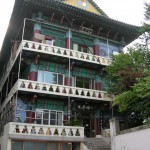
Seonhakwon was founded on November 30th, 1921 as a foundation for the studies of Zen Buddhism. It was founded by several people including Nam-jun, Do-bong, Suk-do, Man-kong, Man-hae and Sung wol. Most of the movements made Seonhakwon Foundation by were suppressed by the Japanese Imperial army which occupied Korea at that time.
After South Korea [...]
Continue Reading →Categories
- Accommodation
- Cinemas
- Entertainment
- Events
- Events – Festivals
- Everything Else
- Five Palaces Seoul
- Food – Drink
- Fortress Wall Gates
- Guides
- Immigration Office
- Korea Info
- Language
- Markets
- Mountains – Parks
- Museums
- National Treasure
- Parks
- Royal Tombs
- Shopping
- Sightseeing
- Stadiums
- Statues
- Temples
- Theme Parks
- Travel
- Uncategorized
- Universities
- Useful Info
- Visas
Korea (South) Time
 Seoul19°CPartly CloudyHumidity: 64%Wind: NE at 4 mph
Seoul19°CPartly CloudyHumidity: 64%Wind: NE at 4 mph

